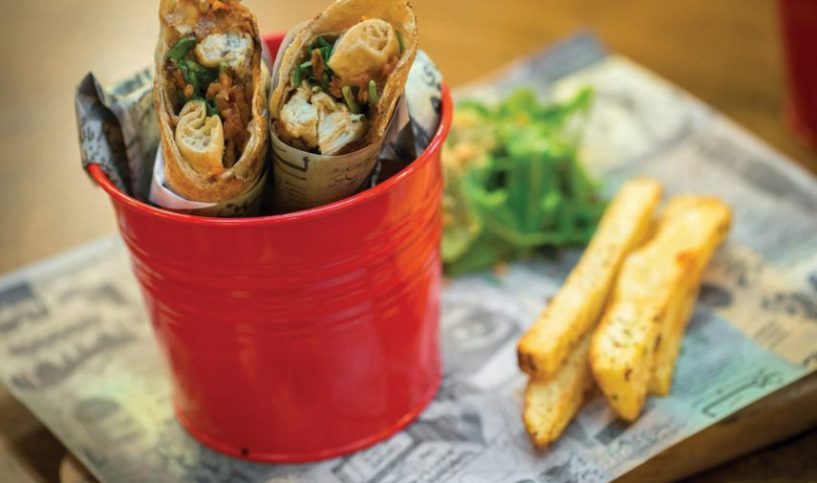Across the globe, from California to New Zealand, there will be a moment in most people’s day when they take pause to enjoy a meal. No matter where you are, it’s likely that someone somewhere in the world is enjoying a meal that is similar to yours. With the development of civilizations around the world and the onset of globalization, we’ve seen basic staples evolve and migrate. Consequently, we’ve developed some common tastes and ‘universal cravings’ that are shared amongst us all.
Ravioli or Shish Barak?
Consider the delectable, classic Italian dish that is ravioli. While you might quickly quip that this dish could only be enjoyed at an authentic Italian restaurant, let’s examine its Middle Eastern cousin that goes by the name of ’shish barak’. A renowned dish in the Levant and Turkey, shish barak is comprised of dumplings prepared in a creamy, spice-infused hot yoghurt sauce and filled with minced meat. A plate of shish barak looks quite similar to ravioli, and it was developed from the same notion of combining protein and dough to deliver a deliciously heartwarming meal using a sauce that brings it all together, yet the spices used are different based on the local palates. We can travel further with this idea to the Far East, where this concoction evolves into the classic gyoza or dumpling, usually served with delicious minced chicken or even shrimp. Fry up the simple preparation of dough and filling and add a minty yoghurt dressing, and you get the classically Indian samosa.
The Traveling Shawarma
From the evolution of the simple dumpling, let’s move on to another common taste enjoyed across the globe: the effortless arrangement of meat and bread. Starting with the much-loved shawarma, this combination of meat and bread appears as a shared history among different cultures. Changing the way in which animal roasting was practiced, it was the Ottomans who first decided on spitting meat vertically instead of horizontally, allowing the meats to bathe in a constant drip of the animal’s natural fats. From there, the basic idea of a shawarma has evolved greatly. From beef and lamb to chicken—its preparation varies across the Middle East. In Germany, the street doner kebab is enjoyed by the masses, and according to the website, Thrillist.com, the fare make ups 50% of German fast-food joints. Meanwhile in Mexico, the preparation of a corn-based bread, the famous taco, is the perfect accompaniment to spit-fired beef, grilled chicken and even seafood.
On Rice and Meat
Considered one of the world’s most versatile grains, rice is a common local staple enjoyed all around the world due its absorbent quality and its accessibility. Infuse it with the flavor of your choice, and you’ve got a unique dish that can accommodate two people or an entire clan. In Spain, the traditional Paella comes alive with the colors of freshly sourced vegetables, meats, or seafood, and is counted as a sharable celebratory offering that brings people together. In the Arab world, we see rice dishes as a common feature at Friday family meals. From the Levantine Ma’loobeh, the Saudi saffron-infused Kabseh, Qouzi, and Kuwaiti Machboos, the most common pairings with these dishes include lamb, veal chops and chicken. In Italy, medium grain, starchy rice is a regular occurrence in the form of risotto, whereas in Asia, notably the birthplace of this international grain, rice is used in various meat dishes. In China, where the rice grain was first domesticated more than 10,000 years ago, the wok preparation of fried rice with eggs, vegetables and meat is now a worldwide favorite. The delightful Biryani from India, abundant with a myriad of spices like turmeric and coriander, is also popular all over the world.
Cheesy Snacks
Cheese and pastry are a match made in heaven. This culinary confection takes all shapes and forms. If you’re strolling through the streets of Paris, you’ll find yourself craving the fluffiest cheese croissant. Take a trip down Beirut’s winding alleys, and you’ll find yourself chasing the aroma coming out of a little bakery preparing its own spin on the traditional cheesy Saj Fatayer. Whether the dough is prepared Danish style, so buttery and flaky, or enjoyed in pie form as is commonly found on the streets of England, cheese is perhaps pastry’s most preferred accompaniment.
Sweet Endings
The doughnut might be small; buts its flavor is mighty. Originating in the Netherlands and Belgium and firstly called Oliebollen, this type of fried dumpling is prepared out of dough and served with a generous coating of powdered sugar. Today, it is a common sweet treat that is enjoyed and celebrated worldwide. Its various forms include the famous bite-sized Canadian Timbits, and the classic glazed American doughnut. Inject it with apricot jam or vanilla cream, and you’ve got yourself an Austrian Krapfen or what the Germans call the Berliner. Even in Middle East and Turkey, this sweet dessert has many names (Lokmet El Adi in Egypt, Sabbat Al Gafsha in Kuwait, Turkish Tulumba or Lokma are among its many names), but the end result is the same—a deep fried dumpling drizzled in a sweet and sticky aromatic syrup. Travel a little farther east to sample the Indian Gulab Jamun and in Iran, and you’ll encounter a similar delicious fritter coated in the same sticky, sweet syrup. Ponder this thought: As soon as you’ve bitten into a plateful of Turkish Tulumba, know that someone across the Atlantic Ocean in Mexico is also enjoying the similar Churro, a fried pastry snack that is coated in sugar or dipped in chocolate.
Food brings people together and we are united by these shared cravings—because when good food is enjoyed, it always elicits a sense of satisfaction that is truly priceless.
Visit www.talabat.com to experience all of the different cuisines on offer and to tour the world’s favorite flavors!










